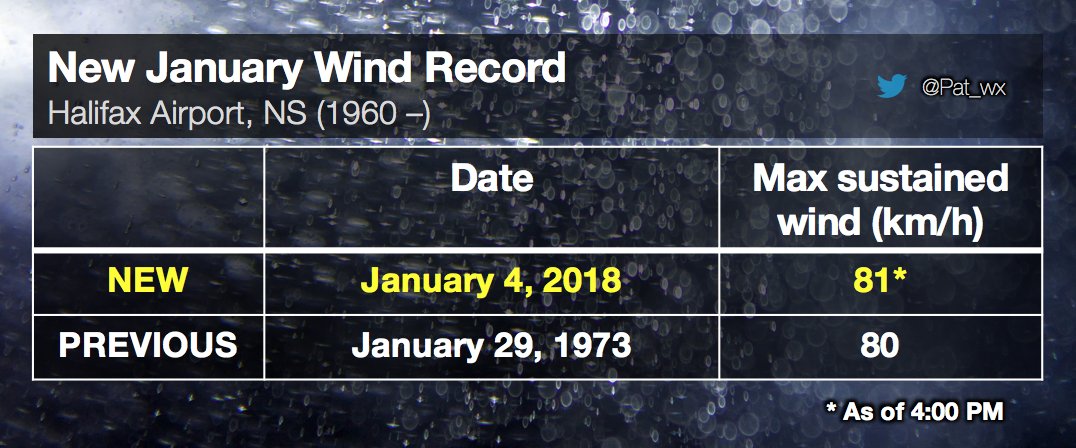Thursday January 4th… Dear Diary. The main purpose of this ongoing post will be to track United States extreme or record temperatures related to climate change. I’ll refer to extreme temperatures as ETs (not extraterrestrials)😊. Here is today’s climate change related topic:
What does the Bomb Cyclone have to do with Global Warming (Part 2)?
Dr. Michael Mann expounded upon some of the same points I made yesterday in a new article:
 Michael E. MannVerified account @MichaelEMann
Michael E. MannVerified account @MichaelEMann
From the article:
“Surely such a massive winter storm, with its promise of bitter cold winds and potentially heavy coastal snowfalls, must be evidence against the climate crisis?
Once again, rather the opposite is true. East Coast winter storms, known as “nor’easters” because of the unusual northeasterly direction of the winds as the storm spirals in from the south, are unusual in that they derive their energy not just from large contrasts in temperature that drive most extratropical storm systems, but also from the energy released when water evaporates from the (relatively warm) ocean surface into the atmosphere.
This is a characteristic that these storms share with tropical storms and hurricanes. The warmer the ocean surface, the more energy that is available to intensify these storms. And the warmer the ocean surface, the more moisture there is in the atmosphere – moisture that is available to form precipitation. As the winds wrap around in a counter-clockwise manner, they bring all of that moisture northwest, where it is chilled and ultimately falls not as rain but snow. Lots of snow.”
The central pressure in association with Grayson got down to a very low 951 millibars:
@gcarbin posted this. 951 mb.

Wow! Notice the last sentence of the above graphic static that Grayson was about a once in a quarter century event. Let’s now look at some fun statistics and pictures for the storm:


#blizzard warning in #StoneHarborNJ #Grayson snow piling up downtown!! pic.twitter.com/dugumOvYEH
— Zeke Orzech (@Zeke_O) January 4, 2018


…………………………………………………………………………………………………………………………..
Here are charts indicating the potential for more ET record lows over the weekend in the wake of Grayson:
 Ryan Maue | weather.usVerified account @RyanMaue
Ryan Maue | weather.usVerified account @RyanMaue
RECORD cold daytime highs on Saturday lead to record LOWS on Sunday morning. Extremely dangerous wind chills.


I often harp on dangerous heat indices during the summer, but cold, windy weather can be just as life threatening. These wind chill values will be extremely dangerous in the wake of Grayson:
 Ryan Maue | weather.usVerified account @RyanMaue
Ryan Maue | weather.usVerified account @RyanMaue


On Saturday minimums across the country will remain brutal mainly east of the Rockies.


The Climate Guy
…………………………………………………………………………………………………………………………..
Wednesday January 3rd… Dear Diary. The main purpose of this ongoing post will be to track United States extreme or record temperatures related to climate change. I’ll refer to extreme temperatures as ETs (not extraterrestrials)😊. Here is today’s climate change related topic:
What does the Bomb Cyclone have to do with Global Warming?
The Northeast is about to be pummeled with a mid-winter, potentially historic Nor’easter named by The Weather Channel as Winter Storm Grayson and dubbed a ” bomb cyclone.” This much hyped storm today may set some pressure and wind records, but what on Earth does this storm, which will likely become a blizzard for some locations, have to do with climate change? To investigate, let’s turn this question on its head and see how climate change may influence the storm.
“Bombogenesis” is met speak for a cyclone that is rapidly deepening and has been in the lexicon for a very long time much like the term “polar vortex,” which got media attention in 2013/14. The phrase “bomb cyclone” was coined today just to get more Internet hits or press:
This term has been in the peer review literature of science for 40 years+…http://journals.ametsoc.org/doi/pdf/10.1175/1520-0493%281980%29108%3C1589%3ASDCOT%3E2.0.CO%3B2 …

Here is the definition from Wikipedia: “Explosive cyclogenesis (also referred to as a weather bomb, meteorological bomb, explosive development, or bombogenesis) refers in a strict sense to a rapidly deepening extratropical cyclonic low-pressure area. To enter this category, the central pressure of a depression at 60° latitude is required to decrease by 24 mb (hPa) or more in 24 hours.” I mention this because currently much warmer than average Atlantic sea surface temperatures along the path of Grayson which potentially and thermodynamically may deepen the storm faster than if cooler waters were present. Here are the latest SST anomalies in the Atlantic:

The anomalies off the Eastern Seaboard are among the highest across the planet as of this writing, which could lead to a deeper, stronger storm; and thus higher wind, more beach erosion, and more snow. So is the old Climate Guy stretching too much on this topic? Not at all according to renowned climate scientist Dr. Michael Mann:
Bottom line: warm oceans mean strengthened nor’easters.
Relevant on the eve of what might be the most powerful nor’easter on record.


#Bombogenesis begins
#meteorology #complexity #GOESEast #rapidscan pic.twitter.com/1JBvoC0568— Stu Ostro (@StuOstro) January 3, 2018
In previous posts I’ve mentioned Daniel Swain’s “dipole” or wave pattern currently over North America, which is interacting with our “bomb”:
Yes, this cold pattern across North America could be racked up to global warming…yeah, yeah I can here some snickers coming from the back of the classroom.😊
Grayson has been a fun system so far leaving rare snow and ice from Tallahassee to Charleston:
 Jonathan ErdmanVerified account @wxjerdman
Jonathan ErdmanVerified account @wxjerdman

 Bill KarinsVerified account @BillKarins
Bill KarinsVerified account @BillKarins

 NortheastWeatherWx @NEWeatherWx
NortheastWeatherWx @NEWeatherWx













